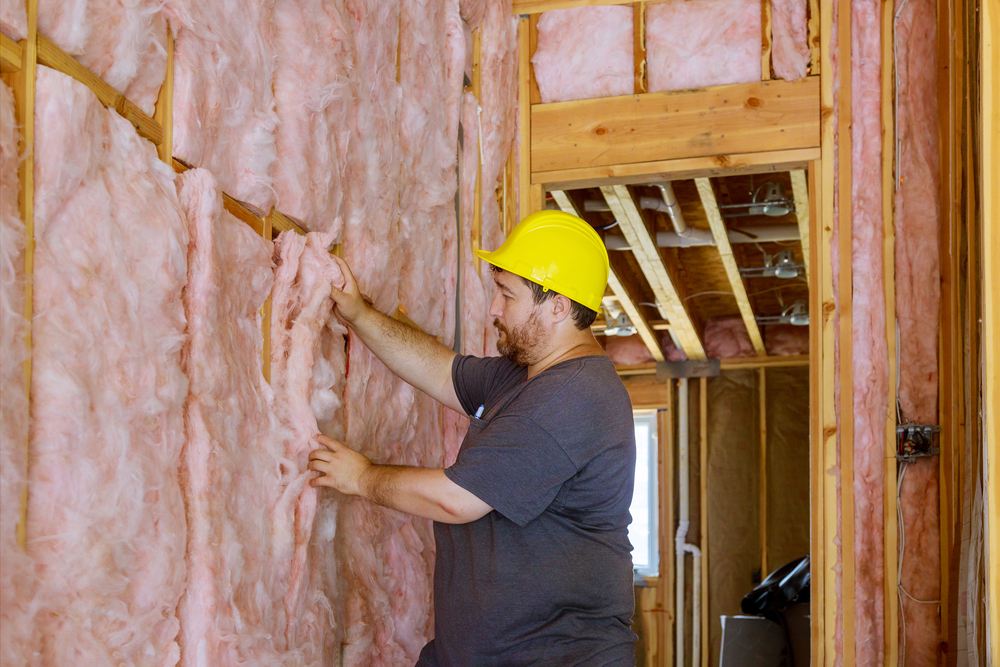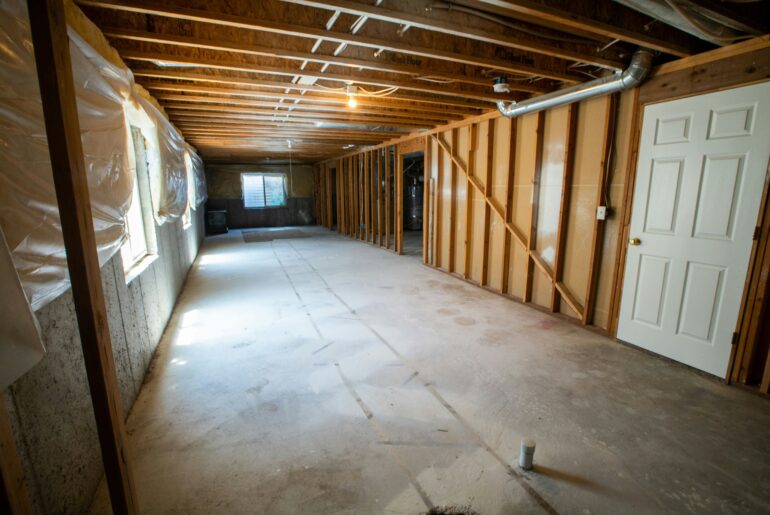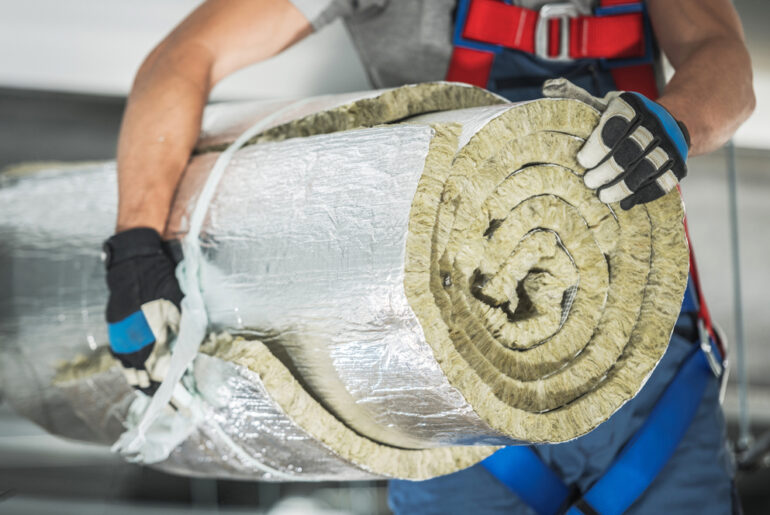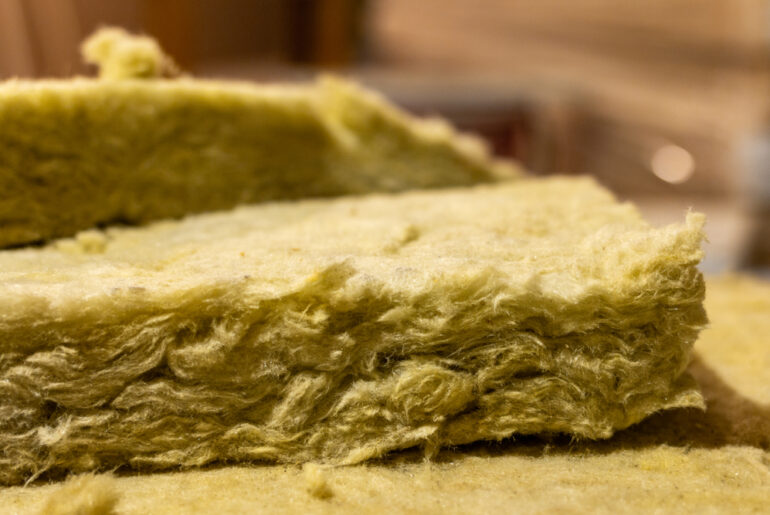Where do you need to insulate in a house? That’s one of the most common questions for homeowners. The US Department of Energy answers this by listing six main spaces to insulate. These include the attic access doors, exterior walls, floors, band joists, windows and doors, and crawlspace.
Another vital thing to understand here is that not all parts of your home need the same type of insulation. Some parts, such as exterior walls and attics, may require thicker insulation. Thus, you can’t just choose one type of insulation for all your insulation needs.
There’s always a comparison to be made before you decide. For this guide, we’ll compare R6 and R8 insulation.
What Is R6 Insulation?
Before we go on to explain R6 insulation, we’ll briefly discuss R-values or R-factors. These are the units used to measure how well a material can resist heat flow. The higher the number, the better the insulating ability of the material.
Now, R6 insulation is an insulation type with an R-value of 6 per inch of thickness. It’s available in two common forms: batts and rolls for easy installation in attics, walls, and other spaces in a house.
R6 insulation is generally made of fiberglass. It is lightweight and designed to fit between wall studs and ceiling joists. It’s also available with or without facings such as paper or foil-backed kraft. The ”facing” adds an extra layer of protection against air leakage and moisture condensation.
Where Is It Used?
If there’s one thing you need to know about R6 insulation, it’s that you will rarely use it individually. It is usually used as an addition to existing insulation.
For example, if you already have R13 insulation in your walls, you can add R6 insulation on top. Doing so will increase the insulation’s thermal resistance and enhance its performance.
Apart from that, R6 insulation is used in HVAC (Heating, Ventilation, and Air Conditioning) systems. Using R6 in HVAC ducts increases their insulation by 33% compared to R4.2 insulation.
R6 Insulation Depth
The ”depth” of an insulation material is its thickness. For R6 insulation, the depth is about 1.75 inches. Expect a variation of +/- 0.5 inches, though.
What Is R8 Insulation?
R8 insulation materials are more efficient than R6 insulation. They have a higher R-value of 8, which makes them good for colder climates and extreme temperatures.
R8 insulation is usually made of fiberglass. It doesn’t only maintain comfortable internal temperatures but also minimizes sound transmission.
Where Is It Used?
Like R6 insulation, R8 insulation can also be used in HVAC systems. It is 50% more effective than R4.2 insulation in such systems.
Although the US Department of Energy doesn’t necessarily specify R8 insulation, any R-value over 5 can supplement insulation in uninsulated wood-frame walls.
For instance, if you like in Zones 3 through 8, you can use R8 insulation and R13 insulation. Another option is to combine R8 with exterior rigid foam panels for a more efficient wall assembly.
R8 Insulation Depth
Fiberglass R8 insulation is 2.5 inches thick. You can use it in wall applications like between furring channels or for framing cavities.
When using R8 insulation for ducting, you’ll find that the insulation is about 1 inch thick. It has an outer reflective surface, which is followed by another outer reflective service, with two layers of bubbles in between.
Which One Should You Choose: R6 or R8?
By now, you should know which parts of your house should get R6 insulation and which should get R8. Here are some other factors you must consider when choosing between both.
Budget
The pricing of both R6 and R8 insulation is more or less the same. But if you need large amounts of both types, it may be wise to go for R6 since it won’t require as much labor as installing R8.
Also, depending on the manufacturer and insulation material, R8 could cost you more than R6.
Thickness Required
How do you decide how thick insulation needs to be? For one, you need to consider the climate zone you live in. Colder climates require more insulation than warmer climates. For example, Zone 4 needs higher R-value insulation than Zone 2.
Secondly, if your house was built before 2000, there is a chance that it may not have enough insulation. You can compensate for this by adding more insulation, preferably R8.
As you saw above, R8 is thicker than R6 insulation. If you need to fill in a large furring or cavity, you’ll have to use more R6 than R8 due to the difference in thickness. The more insulation you use, the heavier a structure can get. Plus, you’ll have to buy more insulation.
So, it’s best to opt for thicker insulation, so you have to use less insulation.
Is R8 Insulation Better Than R6?
You would think that R8 insulation must be better than R6, right? Well, the answer is more complicated than a simple yes or no.
R8 insulation offers more thermal resistance than R6 because of its thicker nature. It can retain heat within your home much better and make your living space more comfortable in cold weather.
However, when it comes to installation and budget, R6 may be the better option. It is easier and faster to install due to its thinner nature. Plus, it won’t require as much additional material or labor, making it a more cost-effective choice.
Whichever is better will depend on your needs rather than a blanket statement.
When Should You Upgrade From R6 to R8?
In some instances, R8 is the undisputed choice. You must upgrade to R8 to meet specific building codes and insulation standards.
If your home is in a cold climate, upgrading to R8 is also beneficial. Thicker insulation will trap more heat and make your living space comfortable even in the harshest weather.
Finally, if you’re looking for energy efficiency and long-term savings, an upgrade to R8 may be worth it. The initial cost may be higher, but you’ll end up saving more in the long run due to lower utility bills.





